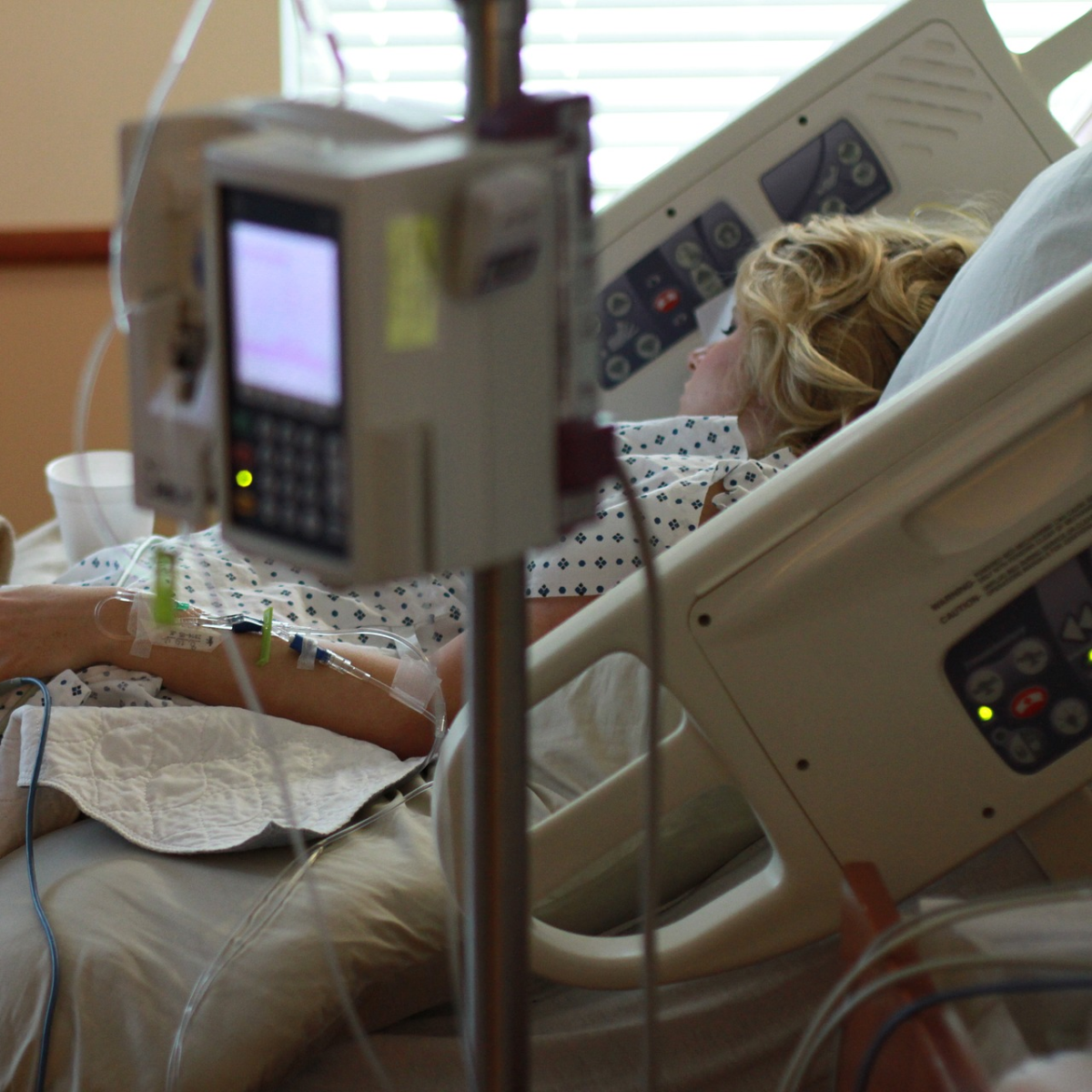Multiple Myeloma Treatment
Front Line Therapy for Newly Diagnosed
A Conversation with Rafael Fonseca, MD
August 2021

In this introductory episode, Dr. Fonseca talks about the landscape of front line or first line multiple myeloma treatment. He covers everything from the first phase of treatment (induction therapy), the various go-to drugs and how they’re used, personalizing treatment for each multiple myeloma patient, and delves into the most commonly reported side effects.
As a veteran specialist of the myeloma field, Rafael Fonseca, MD, interim executive director at Mayo Clinic, shares his insights focused on the latest in emerging myeloma treatments.
Thank you to Karyopharm for its support of our educational program. The Patient Story has full editorial control of our content.
The interview has been edited only for clarity.
First Line Treatment
What are the best ways to determine treatment?
When we face a situation of someone who has a newly diagnosed multiple myeloma, we have to make some early determinations regarding the best treatment pathway for that person.
There are two general ways which to this day still remain. That is will this person be a good candidate for a stem cell transplant? A lot of what we do comes after that decision is made.
It’s not a final decision, but it’s just an initial assessment as to whether someone can go through a transplant or not.
Induction Therapy
When we do that determination, then usually, we come out with a plan that will include the first phase of treatment. We use the term induction, but it’s just really the first phase of treatment.
That’s an initial process by which we want to make sure we clean the person’s body from as much myeloma as possible, and certainly, prevent any additional complications if the person already is experiencing complications from the multiple myeloma.
Now, you were alluding to the name. Usually, we use at least three, and very soon four, drugs for the first treatment of myeloma. We use these medication cocktails. People who hear this start wondering what is it that they use?
We use a lot of what we call small molecules. These treatments, even though they’re anti-cancer treatments, they don’t really fall into what people traditionally would think of as chemotherapies.
These are not drugs that would cause hair loss or nausea or vomiting. That’s not to say they don’t have side effects. They have important side effects we need to recognize, but these are a little bit different from what normally one thinks about with chemotherapy.

Different drugs and administration
For the average individual, this means a combination of injections and pills. The antibodies as you mentioned, daratumumab (Darzalex) being the prototype for that it’s injectable, and it can be given under the skin, so it’s a subcutaneous administration.
We have another class of drugs that are called proteasome inhibitors. Those are mostly also injectable. One of them, carfilzomib, can be used. It’s intravenous.
Then bortezomib is subcutaneous. The rest is done with pills. There are usually three, if not four, drugs that are going to be used upfront.
In addition, we have to use a number of medicines that are preventive. They prevent complications that would arise from some of these pills. They include antivirals and antibiotics.
Also, some of the medications increase the risk of someone forming a blood clot. There’s some blood-thinning type of medications that I use to decrease the risk of that happening.
Trying to achieve deepest response possible
For a person who’s facing treatment, they should know that this is obviously with the intent of keeping the disease under a very good at control, but in most situations, we will try to go to a very, very deep response.
25 years ago, when I was in training, we used to say, ‘Well, control is okay. We’re just going to keep things under a better perspective.’
Now, we know that we have to go for the deepest response possible. In fact, we measure that with more sophisticated tools.
We’re talking about things such as MRD (minimal residual disease) testing, as well. The reason we do that is because that seems to translate into better long-term outcomes. That’s part of what we are doing.
Again, if the person is going through a transplant, we start planning on that from the get-go, but the idea is to get the disease under better control.
Just lastly, if someone who’s hearing all this says, “Well, I’m about quality and quantity.” The good news in myeloma is they both go hand-in-hand.
If you’re able to deliver an effective treatment and you do so safely without much in the way of complications, you’re going to gain both in quality, as well as in quantity of life.

How genetics factor into treatment decisions
As we’re making the [treatment] decision, we realized that every single situation is unique and that could be set to be cliche, but it’s not, it’s absolutely true.
When we see a patient, we start looking at their disease biology. We started looking at many factors, including the genetic makeup of those cells that we’re going to be treating as part of our standard testing. We look at what we call co-morbidities.
We want to understand whether heart disease or diabetes or lung disease will create problems as we think about treatment. Then we think about other factors, such as:
- wellness
- how fit the person is
- how able they are to engage in physical activities
- their social environment
Logistics of planning treatment with patients
If we see a patient right from when the moment we walk into a room, we’re thinking:
- Is this someone who can be coming to the treatment center?
- Do they have issues with transportation and so forth?
It is at the end of all of this and we put all of that information together and say, “For this particular person, this might be the best treatment.”
Personalizing treatment for each patient
Oftentimes, we use similar treatments, even for different groups of patients.
But I can tell you almost every single regimen has some permutation or some change that makes it very unique for that person.
That could be in the form of dosing, it could be the form of schedule, it could be a different choice for some particular reason. We really cannot do it in a cookie-cutter way. Every patient has to be treated individually.
Treatment Side Effects
I always use my two hands, I point to my chair, and I say, “Everything I say, it’s easier said from this chair.” Meaning from a doctor perspective, I realize I’m not the one who is going to be going through the treatment.
But I can explain, I think quite well, just because I’ve seen hundreds or thousands of patients being treated, so I understand what to expect.
Monoclonal antibodies
I would put it in the following general terms. The antibodies, in general, are incredibly well tolerated. There are some issues that we talk about with infusion reactions or injection reactions, but they’re really almost not a problem from a medical side.
Everyone gets through them. I don’t have a single patient where we have not been able to get through with the antibody administration.
That’s pretty straightforward. It sounds more scary than it ends up being in general practice.
Immunomodulatories (IMiDS)
When we talk about the drugs that are called the immunomodulatories, the most common one is lenalidomide (Revlimid), that comes in a pill form and that has a few side effects we need to look out for:
- fatigue
- rash
- risk of forming blood clot

It’s pretty common to have some fatigue. That’s almost expected. In some circumstances, patients will have a rash. It’s not really an allergic rash, is a bit of a rash. Sometimes it gets better, so we try to push through that with some symptomatic treatment. Although it can be severe and the medicine has to be stopped.
The most important part with those medicines is that they increase the risk of someone forming a blood clot.
We ask patients to keep moving around, stay well-hydrated, but we have to put up a preventive blood thinner, either oral blood thinner, which is the most common one or others.
In some circumstances, we have used aspirin and moving a little bit more towards the anticoagulants just because of the seriousness of the clots. That’s what we do.
Proteasome inhibitor
The class of drugs that are called the proteasome inhibitors, one of them, the bortezomib is the one that goes under the skin. That was one we have to monitor very closely because there’s the toxicity called peripheral neuropathy, where people get inflammation of the nerves. The consequence of that is a decreased sensation and in extreme cases, pain or dysfunction. We don’t want it to get there.
We can interfere, but we need to hear from patients.
The other drug in that category is called carfilzomib. Now, carfilzomib has other toxicities. It’s been called cardio-renal. We have to look at blood pressure and there could be some issues with heart function or kidney function.
We monitor for that. In most cases, that is reversible. From what we’ve seen, if you have to stop the medicine, things come back. That’s something we know. That’s for the three main drugs. That’s my standard.
Steroids
The hardest part oftentime is the fourth drug, and that is the dexamethasone. Dexamethasone belongs to the steroid classes. It’s a corticosteroid. It is a tough drug.
Patients and families tell us that this is one of the hardest parts of the treatment. I usually tell patient, “Imagine if you take your medicine, you take your dexamethasone on Monday, it’s like Monday tells the rest of the week, all those days, hey, send me all of your energy. I need it for Monday.”
Monday, Tuesday, and Wednesday, there might be a peak where someone has a lot of energy, and then starting at some point on Wednesday, you’re out of energy, you’ve used it all. Then, you start going into this low. There’s a little bit of a cycle like this when you use dexamethasone.
Dexamethasone, the other way of describing it, I tell patients, “It’s like you drank three jars of just hard coffee. You’re going to be talking a lot, you’re going to be awake, you may have difficulty with insomnia. Also, the human brain reacts in a little bit of a funny way with dexamethasone. It makes us impatient and it makes us edgy.”
I warn patients and families, this is temporary. Don’t hold it against them. It’s going to get better.

The best explanation I have for that is, imagine you’re on the highway and you’re stuck in traffic. I don’t care how patient you are. We all start becoming impatient and start losing our temper.
If Mother Teresa was on dexamethasone, she would probably be a mean person.
It’s really important that we advise patients about this, and that it will get better. Sometimes we have to even either stop or decrease. Then, there are some other issues.
Patients can have problems with management of their blood sugars. Someone who’s diabetic may have a harder time with dexamethasone. In a nutshell, that’s how I would think about all those treatments.
What happens if patients can’t handle the side effects of one drug?
It all depends. Sometimes we decrease the dose, sometimes we change the schedule. People would like to think that medicine is also very regimented, but there’s quite a bit of an artisanal aspect, if you may, of how we go about this.
People say, “I need a weeklong break.” We have to give them a weeklong break. We have to change the dose of a particular medicine.
If there’s a serious toxicity, sometimes we can’t proceed. We have to stop and we have to change to a different class of drug.

I think for patients, as they hear about this, it’s important that they know that there are options.
The important thing is you report your symptoms and how you feel to the healthcare teams and be transparent about that. The fortunate situation is we have many treatment options.
I have patients, as an example, patients who are going to go through stem cell transplant, who maybe don’t respond to the first combination and respond okay to a second one, but have a side effect.
Then we try a third one. I’m talking about a real case. The person had come in with renal failure, really tough situation, but the patient could get through a transplant.
Now, we’re many years out from that and he’s doing very well.
